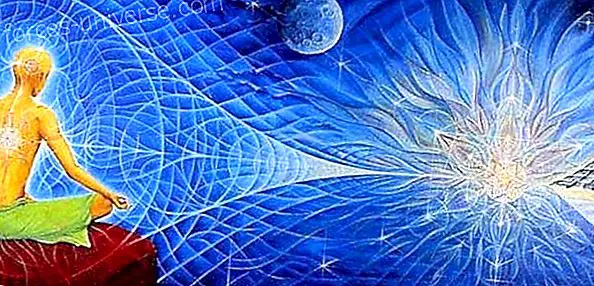
Original text written by TAO PRAJNANANDA, Teacher and Professor of this type of yoga and I have expanded it from various sources.
In yoga the different breathing techniques are very important and they are called pranayamas.
This Pranayama comes from Kundalini yoga and had been kept secret until a few decades ago, when it was revealed to the world by the eminent teacher of that discipline Yogi Bhajan and is the main Pranayama in the practice of Yoga Integral of this course.
The rhythm and frequency of any breath are intimately connected with our emotional and mental states. In fact, emotions and the mind make the breath vary, therefore, if we control the breath, we begin to gain control over the emotions and the mind. By slowing the breath, we calm the mind and balance the emotions.
To perform the breathing of Fire you must be very aware of the movement of the abdomen, and be careful to inhale and exhale in equal parts.
This breath, which is both Pranayama and Kriya, is so important because, once dominated, it offers spectacular results with a minimum of effort and can be practiced in many everyday situations without attracting excessive attention. and allowing us to continue our tasks efficiently.
Fire Breath completely vitalizes the nervous system, causing the secretion of the glands thus purifying the blood. When performed in certain postures and with certain movements, which are done to contract (contract inward) or expand (relax) pressure on the nerve plexuses and glandular centers, these areas are vitalized and filled with energy.
Technique:
Fire breathing is a rapid, continuous and powerful breath, usually 2 to 3 breaths per second (120-180 per minute) through the nose (unless otherwise stated)
It is important that you keep a rhythm, instead of doing it crazy and relax your shoulders.
When you start mastering it, keep in mind that inhalation is as important as exhalation, you have to introduce the same air you take out, if you exhale powerfully you have to inhale the same amount of air to throw it back.
Although it can be done in almost any position, to learn it it is preferable to adopt any Pranayama posture. Then we expand slightly and relax the abdominal region, controlling that only that area moves while the thoracic region remains still. We take short and somewhat shallow breaths at the rate of 2 or 3 per second, taking as a reference the navel area from where we direct the bellows movement while the chin remains slightly collected to align the vertebrae.
When we start in this technique, the main thing is to become aware of the diaphragmatic movement, so we will sacrifice speed if necessary to achieve precision in this movement and if even doing it slowly we do not succeed, we will try to concentrate only on exhalations (bringing the navel towards the spine) and letting inhalations occur automatically when the diaphragm relaxes.
When, through the execution of these gradual steps, we are able to practice the technique correctly (in most cases this can take from a few weeks to a few months) we will experience a fast and constant rhythm that closely resembles an old motor rhythmically striking .
At first this breathing can be difficult to coordinate and forced, but after some time of practice and to the extent that our diaphragmatic muscle is toned and acquires new skills, we will discover a universe of energy at our disposal, easily accessible and to which we will resort with enormous naturalness whenever we need it.
That is to say at the beginning do not try to do it fast, focus on the coordination of the exhalation with the abdominal contraction inwards. It can help you to place the palm of your hand on the navel and notice the movement it makes or even look at the abdomen to see that it goes into the spine.
Even in the stages in which we already have a relative control of the technique, we can experience a process in which every time we start doing it we need a certain degree of concentration and effort in the first minutes, but once it is “heated” the diaphragmatic muscle, the "motor" starts up on its own and we can maintain the practice almost indefinitely with hardly any voluntary effort.
Fire breathing cleanses the blood and releases old toxins from the lungs, and layers of mucus, also cleanses blood vessels and cells. Its practice regulates and rapidly expands the lungs. You can start with three minutes of fire breathing and increase until you reach 15 minutes. Start by alternating three minutes of fire breathing with two minutes of rest, until you achieve three complete series of breath-relaxation
Effects:
Regarding the benefits, we will say that like so many things on the energetic and spiritual levels, it can only be understood when practiced since the words fail here, however, we can refer to important effects such as:
. A rapid change in the chemical composition of the blood (3 minutes)
. A pleasant feeling of energy
. A balance of the cerebral hemispheres
. A quick activation of the chakras
. Strengthens the nervous system to resist stress
. Expands the capacity of the lungs, increasing the life force
. Create a focused, intelligent and neutral mind, and a long etc.
• It helps break addictions and clears the negative influences of cigarettes, alcohol, drugs, caffeine ...;
• Produces mental and physical energy for the whole organism;
• Helps control stress;
• Help to channel the mind
Energy Plan :
Practically all of what has been said so far refers to this level, so we will not insist on the matter any more since when this technique is experienced, its energy implications will be obvious.
Spiritual Plane :
This technique, admits almost any type of visualization or mantric repetition, in the same way that it admits almost any physical or asana posture so we could call it with justice, universal technique.
Possible problems: If you run out of air and you have to take a breath of air, this means that you have exhaled more than you have inhaled. If you feel dizzy, this means that you have hyperventilated and inhaled more than you have exhaled, so be careful to inhale and exhale proportionally
Observation.- Women who are with the rule should not do Fire, candle or abdominal breathing. These precautions are taken not because those things hurt if not because having the period increases body temperature and these postures and breathing also increase it and is not desirable. Pregnant women should turn to a Yoga teacher.
Before starting a practice you should consult with your doctor first.
We continue with a quote from the creator of this pranayama (Yogi Bhajam), who explains how to do Agni pran (fire breathing).
Today I am going to talk to you in a brief and simple way about how to breathe fire.
The first thing is to know that it is a very powerful breathing technique, exclusive to Kundalini Yoga.
Sit with your back straight, better if you can sit in a rock posture (sitting on your heels), with your whole body relaxed, especially look at your shoulders, because at first they tend to tense.
You must inhale and exhale very quickly, and when you exhale, contract the abdomen towards the spine. Focus on coordinating this movement. Inhale little air and exhale bringing the abdomen to the spine. That is to say, "you put your belly" when you breathe out.
It is important that you control the amount of air entering and leaving, trying to be the same. Start doing it very slowly and you see accelerating the breathing rate until you reach approximately 2 or 3 inhalations per second. Finally I will say that if you are a woman and you have the period or you are pregnant, you should not do it. Of course, the rest of the time there is no problem. Actually it is very simple, at first it costs a little, but if it is practiced you will master it shortly. Start by slowing it down and gradually increase its speed.






